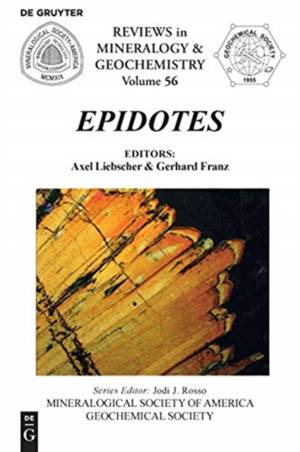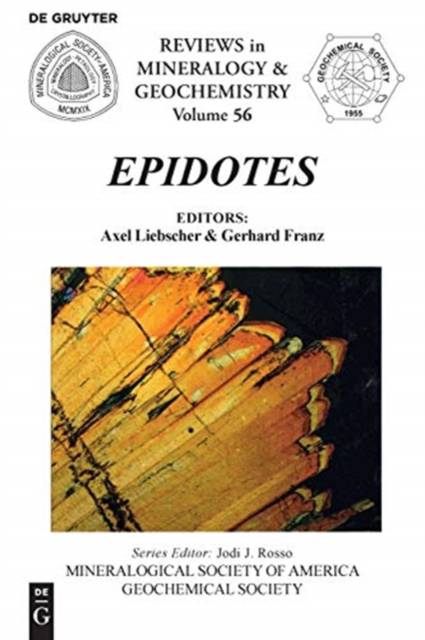
- Retrait gratuit dans votre magasin Club
- 7.000.000 titres dans notre catalogue
- Payer en toute sécurité
- Toujours un magasin près de chez vous
- Retrait gratuit dans votre magasin Club
- 7.000.0000 titres dans notre catalogue
- Payer en toute sécurité
- Toujours un magasin près de chez vous
Description
Volume 56 of the Reviews in Mineralogy and Geochemistry reviews the current state of knowledge on the epidote minerals with special emphasis on the advances that were made since the comprehensive review of Deer et al. (1986). In the Introduction, we review the structure, optical data and crystal chemistry of this mineral group, all of which form the basis for understanding much of the following material in the volume. In addition, we provide some information on special topics, such as morphology and growth, deformation behavior, and gemology. Thermodynamic properties (Chapter 2, Gottschalk), the spectroscopy of the epidote minerals (Chapter 3, Liebscher) and a review of the experimental studies (Chapter 4, Poli and Schmidt) constitute the first section of chapters. These fields are closely related, and all three chapters show the significant progress over the last years, but that some of the critical questions such as the problem of miscibility and miscibility gaps are still not completely solved. This section concludes with a review of fluid inclusion studies (Chapter 5, Klemd), a topic that turned out to be of large interest for petrogenetic interpretation, and leads to the description of natural epidote occurrences in the second section of the book. These following chapters review the geological environments of the epdiote minerals, from low temperature in geothermal fields (Chapter 6, Bird and Spieler), to common metamorphic rocks (Chapter 7, Grapes and Hoskin) and to high- and ultrahigh pressure (Chapter 8, Enami, Liou and Mattinson) and the magmatic regime (Chapter 9, Schmidt and Poli). Allanite (Chapter 10, Gieré and Sorensen) and piemontite (Chapter 11, Bonazzi and Menchetti), on which a large amount of information is now available, are reviewed in separate chapters. Finally trace element (Chapter 12, Frei, Liebscher, Franz and Dulski) and isotopic studies, both stable and radiogenic isotopes (Chapter 13, Morrison) are considered. We found it unavoidable that there is some overlap between individual chapters. This is an inherited problem in a mineral group such as the epidote minerals, which forms intensive solid solutions between the major components of rock forming minerals as well as with trace elements.
Spécifications
Parties prenantes
- Editeur:
Contenu
- Nombre de pages :
- 646
- Langue:
- Anglais
- Collection :
- Tome:
- n° 56
Caractéristiques
- EAN:
- 9780939950683
- Date de parution :
- 09-04-18
- Format:
- Livre broché
- Format numérique:
- Trade paperback (VS)
- Dimensions :
- 156 mm x 234 mm
- Poids :
- 893 g

Les avis
Nous publions uniquement les avis qui respectent les conditions requises. Consultez nos conditions pour les avis.





